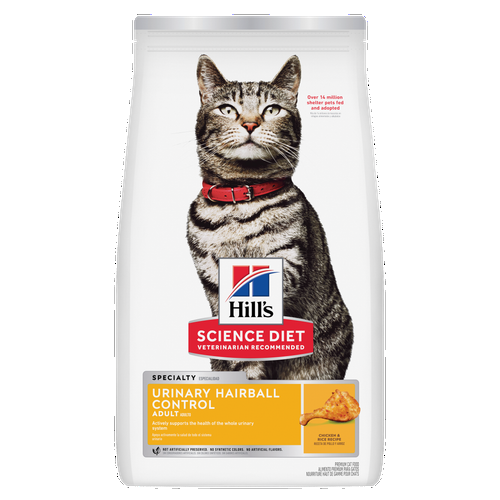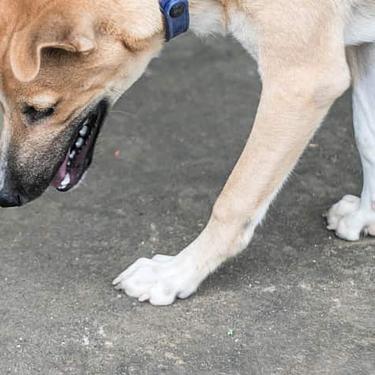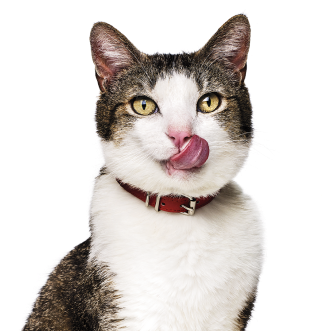
-
Find the right food for your petTake this quiz to see which food may be the best for your furry friend.Find the right food for your petTake this quiz to see which food may be the best for your furry friend.Featured products
 Adult Small & Mini Lamb Meal & Brown Rice Recipe Dog Food
Adult Small & Mini Lamb Meal & Brown Rice Recipe Dog FoodFor the faster metabolism of Small & Mini dogs
Shop Now Hill's Science Diet Adult Oral Care Chicken, Brown Rice & Barley Recipe Dog Food
Hill's Science Diet Adult Oral Care Chicken, Brown Rice & Barley Recipe Dog FoodClinically proven kibble technology to reduce plaque & tartar build-up
Shop Now Adult 7+ Small & Mini Chicken & Brown Rice Recipe Dog Food
Adult 7+ Small & Mini Chicken & Brown Rice Recipe Dog FoodFor the unique nutritional needs of mature Small & Mini dogs
Shop NowFeatured products Adult Indoor Chicken Recipe Cat Food
Adult Indoor Chicken Recipe Cat FoodSupports energy level and beautiful fur in indoor cats
Shop Now Adult Urinary Hairball Control Chicken & Rice Recipe Cat Food
Adult Urinary Hairball Control Chicken & Rice Recipe Cat FoodActively supports the health of the whole urinary system
Shop Now Hill's Science Diet Adult Sensitive Stomach & Skin Dog Food
Hill's Science Diet Adult Sensitive Stomach & Skin Dog FoodHighly digestible recipe, gentle on stomachs. Nourishes skin & promotes a lustrous coat
Shop Now -
Featured articles
 My Pet Ate a Lizard — What Should I Do?
My Pet Ate a Lizard — What Should I Do?Learn what to do if your pet eats a lizard, including whether they can be toxic and symptoms to keep an eye on when they've swallowed one.
Read More 15 Pet-Friendly Cities Ideal for a US Road Trip
15 Pet-Friendly Cities Ideal for a US Road TripCheck out our list of pet-friendly U.S. cities that are excellent travel options, offering off-leash dog parks and pet-friendly restaurants & hotels.
Read More Easy DIY Dog & Cat Toys: Nine of Our Favorites
Easy DIY Dog & Cat Toys: Nine of Our FavoritesBrowse this comprehensive guide for several of our favorite DIY dog and cat toys that are sure to put a little pep in your pet's step.
Read More -


Understanding your cat's body is essential for providing the best care. Take a minute to look your cat over from head to tail and discover how the body works.
HEAD:
A very flexible neck is a sure sign of your cat's predatory nature. It provides a wide range of motion for a strong skull to watch for prey.
EYES:
Your cat's eyes are large and well protected deep inside strong sockets. Each eye is uniquely equipped with a depth of focus specialization to allow for better distance judgment while hunting.
TEETH:
Your cat's teeth are typical of a hunting carnivore. Fangs for killing, incisors for holding onto prey and molars for tearing. The lower jaw is particularly flexible to give an extra boost to chewing food.
EARS:
Your cat's ears are like cups that collect a wide range of sounds. Muscles in the ears are precision instruments that shape the ears in specific ways to detect specific sounds. Just like your ears, your cat's inner ears help balance.


Tasty Tips
BACK:
Your cat's back is marked by larger bones along the middle to support the weight of the torso. Muscles along the back are strong to help carry heavy prey over long distances if necessary.
BACK LEGS:
Your cat's back legs can only move backward and forward. The "knee" is the opposite of the "elbow" on front legs. They work together to give your cat a unique ability to spring and pounce.
FRONT LEGS:
Unlike the back legs, your cat's front legs can not only move forward and backward, but also rotate a bit so the underside of paws can be turned toward the face. This lets your cat clean and wash effectively.
PAWS:
Paws are so long that your cat actually walks more on its "fingers" supported by sensitive, dense pads. Claws can be retracted.


One of our staff authors prepared this article for you
Related products
Related articles

Put your cat on a diet without them knowing
Our low calorie formula helps you control your cat's weight. It's packed with high-quality protein for building lean muscles, and made with purposeful ingredients for a flavorful, nutritious meal. Clinically proven antioxidants, Vitamin C+E, help promote a healthy immune system.
Put your cat on a diet without them knowing
Our low calorie formula helps you control your cat's weight. It's packed with high-quality protein for building lean muscles, and made with purposeful ingredients for a flavorful, nutritious meal. Clinically proven antioxidants, Vitamin C+E, help promote a healthy immune system.

